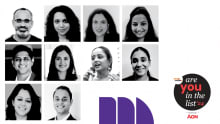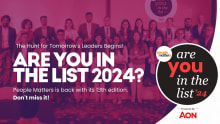The curious case of traits vs competencies

The war of talent is raging and going to stay. The Great Resignation, Great Hiring and Quiet Quitting are indicators that organisations need to and continue to put considerable stakes in their talent management programmes. Identifying and placing the right talent in critical roles are certain differentiators of robust talent management systems.
At the same time, talent prerogatives have also shifted rapidly over the last few years. Organisations have to understand what defines and drives today’s talent and face the fact that these can change over time based on their experiences and the external marketplace conditions. Given this complexity, how can an organisation identify high-potential talent correctly? This article attempts to address the ongoing debate on competencies vs traits as the more appropriate talent yardstick today’s organisations can benefit from.
History of assessments
Historically, talent assessment methodologies focused on work-oriented skills and moved towards aptitude and personality evaluations over time.
As such, behaviours are now viewed as the most important aspect of understanding what drives us, our actions and ultimately our accomplishments/ failures.
In the 1980s and thereafter, the Person- Situation debate got widely researched and studied by Seymour Epstein to determine whether human behaviour was intrinsic to a person or was driven by specific situations.
The person-situation debate has evolved many times now because both sides of the debate have turned out to be right. With respect to momentary behaviours, the situation side is right: the typical individual’s behaviour can be highly variable. But when it comes to predicting behavioural trends (e.g., a person’s typical way of acting), the person side of the debate is right: intrinsic personality & traits predict and describe behaviour very well over long periods, and a trait approach can be used to differentiate between people.
Many organisations today are turning to behavioural science research to improve their hiring practices and assess top talent, with a deep interest in trait-based evaluations.
At the same time, and for over four decades now, competency models & competency-based practices have gained much attention from organisations and have been looked upon widely as a means for optimising personal and organisational efficiency- not just for selection but also for training, assessment, development, talent management and succession planning.
Competency-based approach
In the 1970s, David McClelland wrote the seminal paper on 'Testing for Competence rather than Intelligence'. It was a step away (and arguably, a step up) from the prevalent models at the time- that relied on general intelligence & skills as signs of potential.
Since then, there have been many more definitions and additions to the competency model in industrial psychology. More recently, Bartram, Robertson, and Callinan (2002) proposed competencies as ―sets of behaviours that are instrumental in delivering desired results or outcomes.
Competencies are a person's knowledge and behaviours that lead them to be successful in a job. To put it simply, competencies refer to the combination of skills, abilities, and knowledge for achieving superior results in a particular job or work context.
Though competencies are used to measure current performance and role readiness, the argument made for high-potential identification is that competencies of higher proficiency levels can be leveraged for it. Most selection/ development centers assess individual contributors for higher levels of people management competencies.
While competencies have brought more structure and advanced the function of assessment and development, it is also subject to a lack of uniform definition, and researchers often have varying interpretations and inferences around them. And there are some limiting factors to be kept in mind while using competency-based methods.
Limitations of competencies
First and foremostly, the focus is largely on tangibles, disregarding the not-so-easily observable internal characteristics that lie below the surface, such as preferences, mindset, emotions and personal life experiences. This has led to focusing on fragments or specific behaviours— rather than examining an individual as a complete being.
Another problem with competency models is that they rely too heavily on an individual's past success at identifying behaviors that have worked in the past, rather than mindset needed for the future. For this model to be effective, leaders would need to always stay true to their past strategies no matter how much things change over time—but this isn't always possible!
Thirdly, competencies have been subject to varying interpretations, and if defined poorly in a specific organisational context- the associated assessment or development efforts will also suffer. On the other side, in our practice, we have also observed organisations crafting elaborate and exhaustive competency documents, which can become very complex & tedious for line managers to follow.
Lastly, behavioural competency models assume consistency in human behaviour but are past behaviour the best predictor of future behaviour? This approach denies or discounts the possibility that people can change. It also underestimates the importance of learning and change, which can be difficult and time-consuming but is achievable and certainly desirable.
Trait-based approach
A "trait" can be understood as a distinguishing characteristic or quality, especially of one's personal nature. These are more innate to an individual and truer to one's characteristics & attributes. For instance, if someone is 'Articulate', they may possess the competency of 'being able to speak clearly' or 'knowing how to write effectively'.
Traits play an underlying role in how people evolve—what is more natural for them and what is more of an effort. They are the more enduring aspects of a person, exerting a strong influence on behaviour- when encountering different situations or contexts. Specifically for potential assessment, they offer a broader and deeper window into the individual's mindset. For instance, 'learning agility' features in most contemporary models for a potential assessment today - as an underlying trait encompassing different associated competencies and attributes.
Limitations with traits
Although traits are closer and more accurate assessments of our psychological and inner circuitry, in terms of how we behave and respond to different contexts- there are limitations. Fundamentally, traits are even harder to measure than competencies. They tend to be more subjective and do not lend easily to evaluation. We suggest following multiple assessments, measuring traits, behaviours and underlying value drivers to gauge these more effectively. The findings of any psychometric instrument must be validated with interviews by an expert.
There is no silver bullet, but there is a silver lining
So, traits are more accurate, but competencies are more observable. How do organisations make their choice, then?
As it turns out, traits manifest as behaviours in action and can be observed or corroborated with related competencies. For example, someone who is collaborative (a trait) will likely be more effective in demonstrating teamwork competencies. An associated competency statement is: Collaborates effectively across teams and with team members for problem solving.
Traits may enable, co-exist with, or even impact the demonstration of competencies.
Conversely, certain competencies may highlight certain traits too.
There are practical implications and applications arising from this- that professionals and practitioners can use.
As practitioners, we suggest the following takeaways that organisations can benefit from and apply as per the use case:
- When measuring for success in the current job context or role-fit today, working with competencies offers more advantages. However, when organisations measure potential, innate traits become more instrumental in identifying enduring abilities and behaviours that can lead to future success in more challenging roles. Crafting the success profile of a successful leader in terms of traits, competencies and experiences will help make the assessments sharper and more focused.
- Organisations can opt-in for a combination of various assessments – such as in-basket exercises, case study simulations, situation judgement tests, forced-choice questionnaires et al.- with high validity to assess traits and competencies.
- Competencies as skills and capabilities can be learned and practised. Traits define our style and natural preference- and are difficult but can be modulated too. It would be difficult to "teach" determination, but it might be role modelled effectively and can be modified through coaching and feedback. For example, determination is often considered a desirable trait; someone could benefit from understanding and awareness through coaching that being too determined can cause a fixed mindset in certain situations. In fact, most of the leadership development efforts in our practice focus on building and practising self-awareness for leaders to be able to counter-balance specific traits & modulate desirable behaviour.
In conclusion
With new frontiers being pushed in the field of assessment and development practices such as neuroscience, contemplative practices, and positive psychology- we can expect newer, more integrated models of potential assessment and development being theorised and practiced – moving the field forward beyond competencies to place more importance on drivers and traits.
After all, human complexity merits going deeper to distinguish between internal orientation and external stimuli as co-creators of behaviours- with traits being more enduring, steadfast reflectors of 'who we are' and competencies being the wavering but more observable reflectors of 'what we do'.









